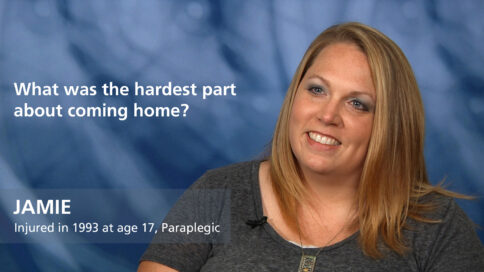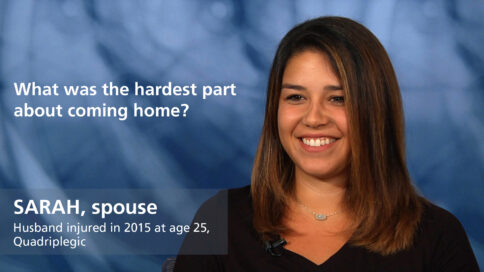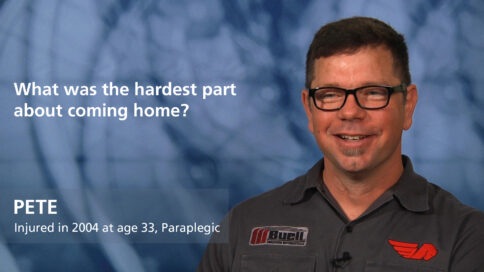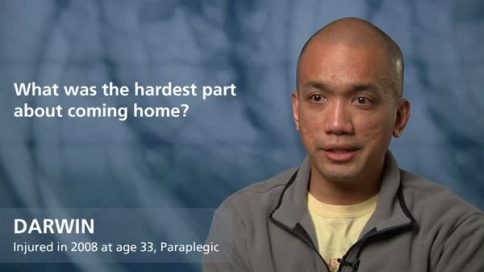What do family members need to know about how to assist with a wheelchair transfer after a spinal cord injury? - Elaine Rogers, PT
|
|
What do family members need to know about how to assist with a wheelchair transfer after a spinal cord injury? |
|
Elaine Rogers, PTPhysical Therapist, VA Puget Sound Health Care System, Seattle |
||
| Read Bio | More Videos by Elaine Rogers | |
|
Share |
||
Transcript
I think the key things for family members to know in assisting with a transfer is that for safety, you want to be in front of the person and not behind the person. If I’m behind the person and I help lift their bottom higher in the air, I’m at risk at dumping them forward onto their head. If I am in front of the person, and I block their knees, it’s very difficult for that person to fall. I want to understand how to provide that block at the knees so that they can’t move forward and fall to the floor while also allowing them to bend far enough forward, or get the lean that they need to make their body efficient in the transfer as possible and the best lift possible. If you’re in the wrong position, you can actually make it harder for someone to transfer, rather than helping them with that transfer. If you’re helping them with a stand transfer it’s a little bit different than in a wheelchair. Although there are some similarities-you still want to be in front of them so that they can’t tip forward, you still need to stay out of the way of their head and their ability to lean their trunks so that they can stand appropriately. But maybe rather than blocking their knees, you’re blocking their feet so that their feet don’t kick out from under them accidently and they’ve got that good foot platform. And even in our transfer from a bed into a wheelchair where somebody is not standing, you also do need to be aware of their foot position and of the position of the wheelchair, and do you need to have foot on one side of the wheelchair to block the wheelchair for them so it doesn’t move?
Show Less|
|
||
add
What do family members need to know about how to assist with a wheelchair transfer after a spinal cord injury? |
||
Elaine Rogers, PTPhysical Therapist, VA Puget Sound Health Care System, Seattle |
More Videos by Elaine Rogers | |
| Transcriptadd | share | |
I think the key things for family members to know in assisting with a transfer is that for safety, you want to be in front of the person and not behind the person. If I’m behind the person and I help lift their bottom higher in the air, I’m at risk at dumping them forward onto their head. If I am in front of the person, and I block their knees, it’s very difficult for that person to fall. I want to understand how to provide that block at the knees so that they can’t move forward and fall to the floor while also allowing them to bend far enough forward, or get the lean that they need to make their body efficient in the transfer as possible and the best lift possible. If you’re in the wrong position, you can actually make it harder for someone to transfer, rather than helping them with that transfer. If you’re helping them with a stand transfer it’s a little bit different than in a wheelchair. Although there are some similarities-you still want to be in front of them so that they can’t tip forward, you still need to stay out of the way of their head and their ability to lean their trunks so that they can stand appropriately. But maybe rather than blocking their knees, you’re blocking their feet so that their feet don’t kick out from under them accidently and they’ve got that good foot platform. And even in our transfer from a bed into a wheelchair where somebody is not standing, you also do need to be aware of their foot position and of the position of the wheelchair, and do you need to have foot on one side of the wheelchair to block the wheelchair for them so it doesn’t move?











































